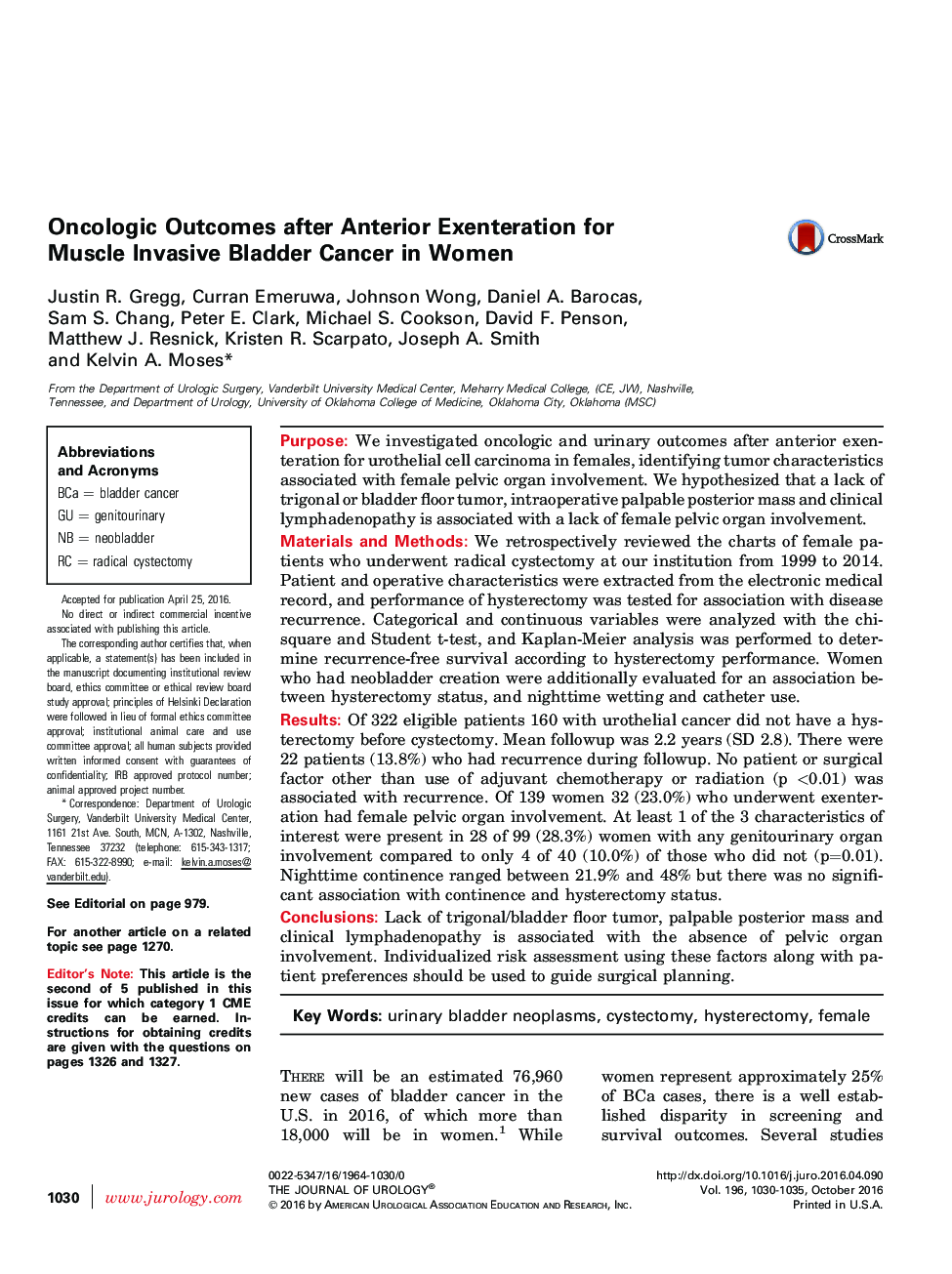| Article ID | Journal | Published Year | Pages | File Type |
|---|---|---|---|---|
| 3857707 | The Journal of Urology | 2016 | 6 Pages |
PurposeWe investigated oncologic and urinary outcomes after anterior exenteration for urothelial cell carcinoma in females, identifying tumor characteristics associated with female pelvic organ involvement. We hypothesized that a lack of trigonal or bladder floor tumor, intraoperative palpable posterior mass and clinical lymphadenopathy is associated with a lack of female pelvic organ involvement.Materials and MethodsWe retrospectively reviewed the charts of female patients who underwent radical cystectomy at our institution from 1999 to 2014. Patient and operative characteristics were extracted from the electronic medical record, and performance of hysterectomy was tested for association with disease recurrence. Categorical and continuous variables were analyzed with the chi-square and Student t-test, and Kaplan-Meier analysis was performed to determine recurrence-free survival according to hysterectomy performance. Women who had neobladder creation were additionally evaluated for an association between hysterectomy status, and nighttime wetting and catheter use.ResultsOf 322 eligible patients 160 with urothelial cancer did not have a hysterectomy before cystectomy. Mean followup was 2.2 years (SD 2.8). There were 22 patients (13.8%) who had recurrence during followup. No patient or surgical factor other than use of adjuvant chemotherapy or radiation (p <0.01) was associated with recurrence. Of 139 women 32 (23.0%) who underwent exenteration had female pelvic organ involvement. At least 1 of the 3 characteristics of interest were present in 28 of 99 (28.3%) women with any genitourinary organ involvement compared to only 4 of 40 (10.0%) of those who did not (p=0.01). Nighttime continence ranged between 21.9% and 48% but there was no significant association with continence and hysterectomy status.ConclusionsLack of trigonal/bladder floor tumor, palpable posterior mass and clinical lymphadenopathy is associated with the absence of pelvic organ involvement. Individualized risk assessment using these factors along with patient preferences should be used to guide surgical planning.
